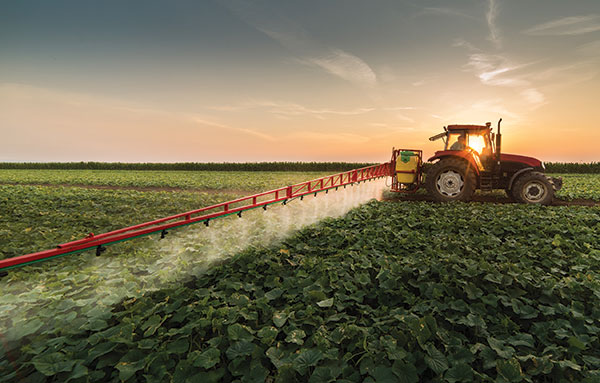Dry fine grinding for agrochemical applications

The reason why pesticide manufacturers develop specific components and dosage forms is to use the active ingredients at the right time and in the right amount when crops need protection, to effectively reduce factors that are detrimental to crop growth. Therefore, a plant protectant is essentially a mixture of different ingredients. These ingredients can basically be summarized into three major categories: active ingredients in the formula; fillers used to dilute the active substances, such as clay, talc, kaolin or silica; auxiliaries and additives used to improve the quality of the formula (such as stabilizers, Wetting agents, protective agents, defoaming agents, etc.).
In the pesticide production process, the first step is feeding and mixing; the second step is grinding. Through different types of grinding equipment shown below, the mixed material particles are ground and dispersed to the target fineness to meet the application requirements. After grinding, it goes through a screening process to prevent the possible presence of oversized particles. Finally, add additives or fillers that do not require grinding and perform dispersion and mixing again.
The reason why pesticide particles are required to be ultra-fine particles and have a narrow particle size distribution: the finer the active ingredient particles, the more effective they are, which means that a smaller amount can be used to achieve the same effect. This is beneficial for safety, environmental and economic reasons: reducing toxic effects on people in the spray area; reducing environmental pollution; reducing the use of the most expensive active ingredients in the formulation, thereby reducing pesticide production costs and increasing profits .
The narrow particle size distribution facilitates a simplified pesticide application procedure: the powder is dispersed in water before application on crops. The finer the particles, the more stable the suspension will be and no sedimentation will occur during operation. During the pesticide spraying process, the problem of large particles clogging the nozzles of the spraying system is effectively reduced.
Choosing the right mill is crucial, and ALPA offers different dry grinding technologies depending on the fineness and specifications required by the pesticide manufacturer.
Impact grinding machine CSM with classifying function
This type of classifying mill offers the possibility of achieving both grinding and classifying functions in one system. The CSM classifier is a combination of a fine impact classifier and a guide wheel classifier. Using two independent motor drives, one for the grinding disc and the other for the grading wheel, the CSM can precisely adjust the grading wheel speed to obtain a wide range of final product fineness from d97=9μm to 200μm. By utilizing the geometry of the classifier impeller and the air seal between the classifier wheel and the machine top cover, precise control of the upper limit of the particle size of the grinding material is ensured, thereby achieving fine classification.
Fluidized bed jet mill
This jet mill is suitable for ultra-fine grinding of materials of various hardnesses (soft to extremely hard). In the grinding area, the particles are driven by high-speed airflow to collide and grind with each other. There are no additional grinding parts. The dynamic classifier controls the maximum particle size. The air flow velocity at the nozzle outlet in the grinding chamber can reach 500 to 600 m/s. Because high grinding energy and impact speed can be generated in the fluidized bed, it is possible to achieve D50 fineness of 1 to 5 μm.
Due to such structural characteristics, the airflow mill has a very attractive feature: during the grinding process, there will be no temperature increase in the grinding chamber. The reason is that the heat generated when particles collide with each other is offset by the cooling phenomenon produced by the expanding compressed gas, so that the temperature in the grinding chamber remains constant and the active material molecules will not be destroyed.
Currently, pesticide production is of increasing strategic importance. There must be a re-evaluation to place greater emphasis on environmental constraints, both during the production of products and their use on agricultural crops. However, meeting the needs of the world’s population remains a huge challenge. The role of chemical engineering is to produce pesticides in the best possible way, which requires selecting the most suitable grinding technology to achieve this.
